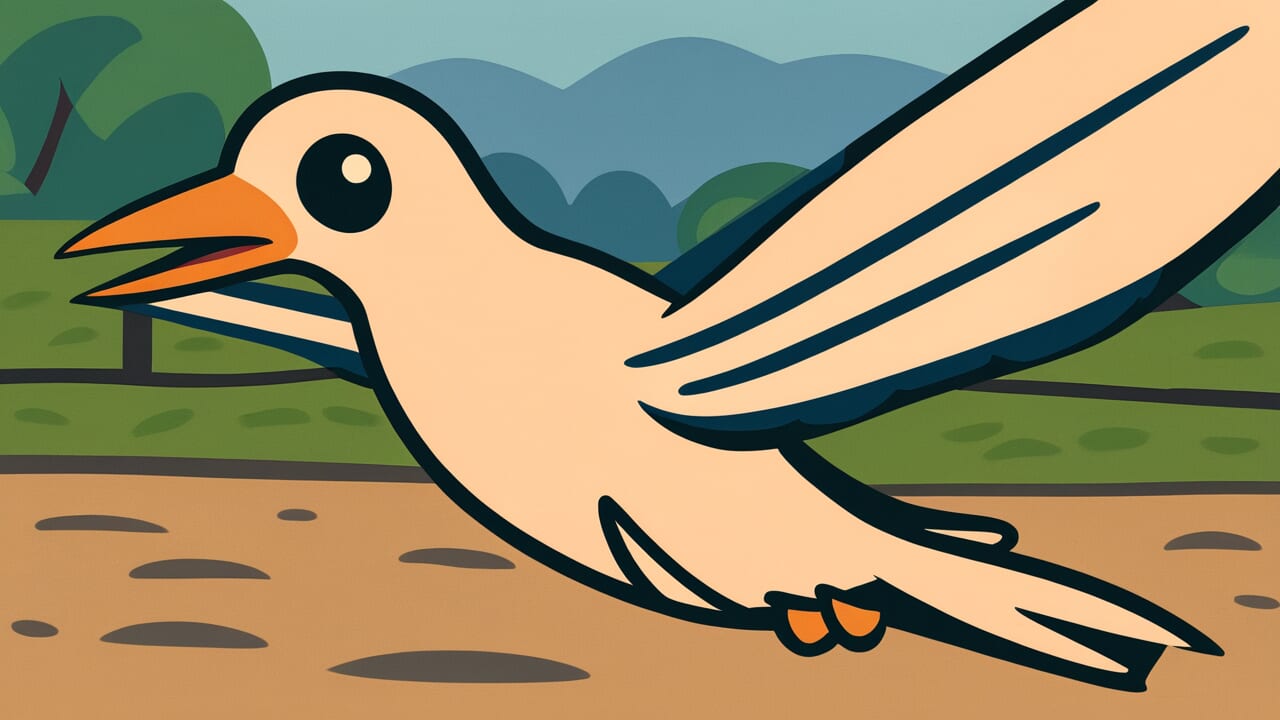How to Read “When swallows fly low, it will rain”
tsubame ga hikuku tobu to ame
Meaning of “When swallows fly low, it will rain”
This proverb expresses weather prediction wisdom. When you see swallows flying lower than usual, rain will likely come soon.
In times when farming and outdoor work were central to life, people had no weather forecasts. They needed to predict weather by observing natural changes.
The visible change in swallow flight height was a valuable sign. It told people about coming weather changes.
Even today, with advanced weather technology, this natural connection is scientifically accurate. When you see swallows flying low, you prepare. You bring in laundry or take an umbrella.
This proverb shows the sharp observation skills of Japanese people who lived alongside nature.
Origin and Etymology
This proverb comes from weather prediction wisdom. Japanese people discovered it through long years of observing nature.
The exact first written record is unclear. But farmers passed it down through generations as one form of weather observation.
Swallows are migratory birds that come to Japan from spring to summer. They build nests under house eaves and live close to people.
Farmers saw swallows every day while working. They gradually noticed the connection between flight patterns and weather. They repeatedly observed swallows flying lower before rain.
This observation has scientific backing. Before rain, air pressure drops and humidity rises. Small insects that swallows eat get heavier wings from moisture. They cannot fly high.
Swallows chase these insects and fly at lower altitudes. Some theories say insects gather at lower places due to pressure changes.
Ancient people could not explain the cause scientifically. But they accurately captured the correlation between natural phenomena. They passed this life wisdom to future generations.
Interesting Facts
Swallows can fly over 50 kilometers per hour. They normally fly between 10 and 50 meters above ground.
But before rain, they come down to just a few meters. This is near human eye level. The difference in flight height is clearly visible. This made it practical as a weather forecast.
Many proverbs predict weather from animal behavior. Dragonflies flying low, frogs croaking, cats washing their faces. These are called weather observation through nature.
They were scientific weather forecasts in times without weather instruments.
Usage Examples
- Swallows are flying low today, so it might rain this afternoon
- They say when swallows fly low, it will rain, and it really did start raining
Universal Wisdom
This proverb teaches universal wisdom. Small visible changes hide signs of big changes coming.
A slight difference in swallow flight height predicts a major weather change. The ancestors who noticed this connection had deep insight.
We humans tend to focus only on big events and dramatic changes. But truly important information often appears as small changes in daily life.
In human relationships too, there are subtle signs. A slight shadow on someone’s face. A minor change in voice tone. A behavior pattern slightly different from usual.
If you notice these small signs, you can address problems before they grow large.
This proverb also shows another truth. Cause and effect are not always directly connected. Swallows flying low and rain falling seem unrelated at first.
But through invisible factors like air pressure and humidity, they are truly connected.
In life too, seemingly unrelated events are sometimes deeply connected. Carefully observe small changes happening now. Think about their meaning.
This attitude gives us the power to predict the future and prepare appropriately.
When AI Hears This
Predicting rain from swallow flight height is actually an advanced information processing system. From an information theory perspective, swallows integrate three independent information sources.
These are falling air pressure, rising humidity, and insect flight altitude. When humidity is high, insect wings become heavy and they fly low. Swallows chase these insects and fly low.
Humans read multiple hidden variables from one visible piece of information. They indirectly observe “humidity” and “air pressure” which are hard to measure directly. They do this through “swallow height.”
This is Bayesian inference itself. The prior probability is “swallows normally fly high.” When observation data shows “flying low,” you update the posterior probability that “rain is near.”
Interestingly, swallows themselves do the same Bayesian learning. They constantly update uncertain information about prey location using environmental data like humidity and air currents.
Even more amazing is the information compression rate. Complex weather data is compressed into a one-dimensional indicator called “swallow height.” Yet prediction accuracy remains high.
This is essentially the same as dimensionality reduction in modern machine learning. Humans have used an information processing system that living things optimized over tens of thousands of years. They did this through observation alone.
Lessons for Today
This proverb teaches modern people the power of close observation. Even without advanced technology or expert knowledge, you can gain important information.
Just watch your surroundings carefully in daily life.
In modern society, smartphones let you check weather forecasts instantly. But relying too much on digital information weakens your ability to see, feel, and judge for yourself.
This proverb reminds us to capture natural and environmental changes with our own senses.
In business too, observation skills matter. Success comes not just from data and reports. It comes from noticing small changes on the ground.
Customer expressions, subtle market atmosphere, slight changes in team member behavior. People who notice these small signs like “how swallows fly” can respond ahead of big changes.
Why not start paying attention to small changes around you today? They become clues for predicting the future. Not just weather, but human relationships, work, health, and everything else.



Comments